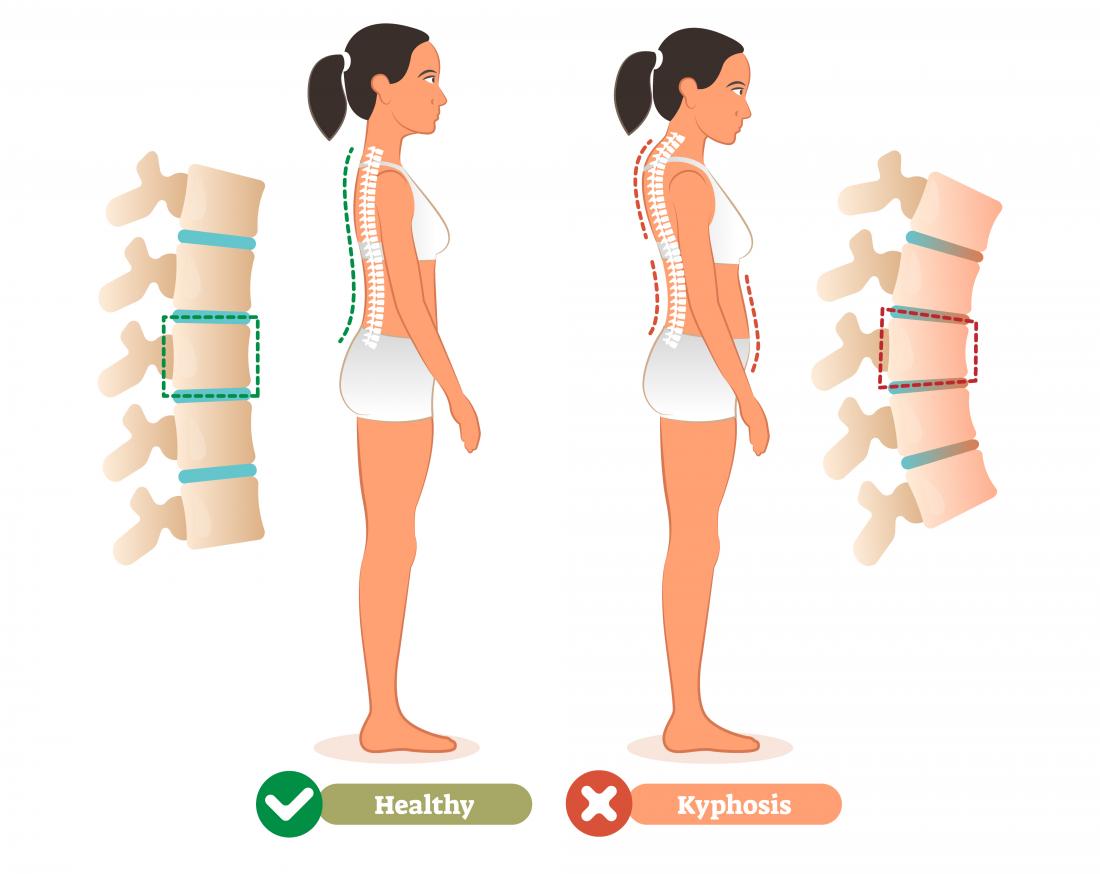Kyphosis is the most frequent deformation of the spine. The origin of the word comes from a Greek word that means vault, convexity. It is a posterior convexity of one or several segments of rachis, and alterations of the vertebrae that adopt a typical wedge shape.
In kyphosis the nucleus moves backwards, there is a separation in the back of the vertebral bodies and an approximation of the anterior part. It originates an unequal distribution of intradiscal pressure, increasing pressure at the edges anterior bodies and discs and decreasing at the posterior edges thereof. The ligaments, tendons and muscles located in the convex are distended and those located on the concave side of the curve are retracted or shortened.
Symptoms
Kyphosis can cause pain or be asymptomatic (no symptoms). The pain is located in the most pronounced vertex of the deformation. This deformation appears isolated or in combination with other deformations such as lordosis and scoliosis.
Causes
Kyphosis can be originated by the following causes:
-Congenital.
-Postural.
-Scheuermann’s disease.
-Neuromuscular.
-Traumatic or surgical.
-Metabolic.
-Irradiation.
-Spinal dysplasias.
-Collagen diseases.
-Tumors.
-Myelomeningocele.
-Other.
Kyphosis according to ages
1. Child in the first two years: The usual cause is rickets, with a single curve.
2. Child school age: The childish round back appears, as an expression of easy tiredness and muscle hypotonia consecutive to a general poor state. They are pale, asthenic and thin children.
3. The curved back of adolescents: o juvenile dorsal kyphosis, among the main causes we cite in the first place deforming vertebral osteochondritis or Scheurman disease, which develops in approximately two years, with the pain of medium intensity, dorsal location. When the process is finished, the spine can recover its normal position, but many times it can leave a kyphosis.
4. Adults: The most common cause if you do not have a history of “kyphotic attitude”, it is traumatic.
5. Elder: There is usually senile kyphosis due to thinning of the disc.
Postural hygiene measures to compensate kyphosis:
1. Correct standing positions.
2. Continued physical activity: Swimming (Back), Yoga, Pilates …
3. Contraindicated sport: Cycling, motorcycling. The harmful exercises, for kyphosis, will be all those that in their execution require clearly ciphering positions or trunk flexion.
4. Orthopaedic corsets will be used to combat kyphosis if it is not corrected with the physiotherapist.
5. As the last treatment, we will resort to surgery.
You might also want to read: Degenerative disc disease

